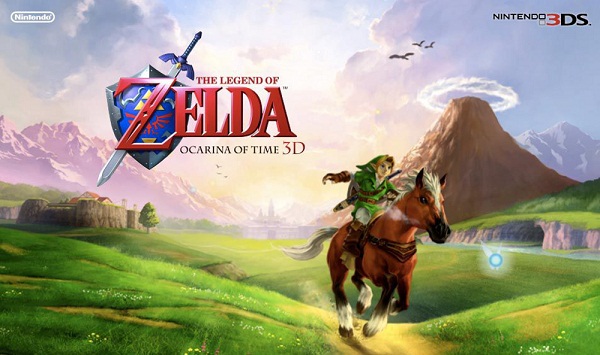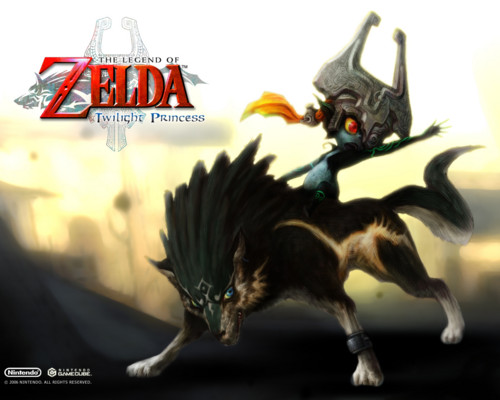(This article contains minor spoilers for The Legend of Zelda: Ocarina of Time and The Legend of Zelda: Twilight Princess.)
Having never been a Nintendo 64 owner, I’ve never had the chance to play The Legend of Zelda: Ocarina of Time until Nintendo upgraded the graphics and rereleased the game for the Nintendo 3DS earlier this month.
I guess that makes me a bit of a late bloomer, but at the same time, I’m fortunate because I get to experience the game for the first time with a fresh 2011 perspective. Because I’m not tied to any sense of nostalgia, I actually noticed a lot of issues with Ocarina of Time that slowly helped me realize why Twilight Princess, despite its disrepute among fans, is overall a better game in every conceivable way.

The reason I’m comparing the two games — as opposed to Wind Waker or any other Zelda title — is simple: Unlike Wind Waker, which features a Hyrule drowned beneath a vast ocean, the world and characters of Ocarina of Time and Twilight Princess are quite similar.
To start, Ocarina of Time has more than its fair share of annoyances. First and foremost is Navi. She is rarely helpful. Like a sugar-addled child with ADHD, she zooms around willy-nilly, often flying over to random objects and calling attention to them, even though they’re of no importance.
By contrast, Midna actually has a personality and is tremendously likable. She’s mostly stays out of your way, but in the instances that the player gets stuck, Midna jumps in with helpful, precise advice about where to go and what to do. Navi offers only generic, idle chatter that generally amounts to something like “Hey, let’s go to the next dungeon!”
Some of the puzzles in Ocarina of Time really bothered me, too. I’m not talking about finding heart-container pieces and Gold Skulltulas. Such collectibles are par for the course in any Zelda. It's the puzzles you have to solve in order to keep the story going that get to me.
The challenges seem arbitrary compared to Twilight Princess. I would have never in a million years guessed that playing the Song of Storms at the windmill would drain the well water or that I'd have to take a leap of faith by walking through the wall at the bottom the well.
The same goes for the Spirit Temple. After realizing that I needed to become a kid in order to pass through the small hole, I hastily warped back to the Temple of Time. Only then did I realize that I needed to walk outside the Spirit Temple first in order to get Sheik to teach me the Requiem of Spirit. Without it, young Link isn’t allowed to pass through the Gerudo Fortress. In the end, I had to turn back into adult Link, warp back to the Spirit temple, reenter the temple, and exit the temple normally in order to initiate the cut scene with Sheik.
I know I probably acted too fast for my own good, but what player would trudge all the way back to the Temple of Time by foot when they could easily warp to the destination? It would’ve been fine if Nintendo had provided some kind of barrier or advice (i.e., an actual reason for Navi to interrupt me) against prematurely leaving the temple. In Twilight Princess, players are not able to warp inside of dungeons, period.
 The puzzles in Twilight Princess arise more organically. For example, when someone stole the medicine-soaked wooden statue, I instinctively knew to seek out the scent and locate it. People might think these puzzles are too straightforward, but at the very least, they make sense.
The puzzles in Twilight Princess arise more organically. For example, when someone stole the medicine-soaked wooden statue, I instinctively knew to seek out the scent and locate it. People might think these puzzles are too straightforward, but at the very least, they make sense.
I understand there’s an eight-year gap between the two original releases, but playing Ocarina of Time makes me appreciate what a great game Twilight Princess really is and why it deserves more recognition than it gets. When I finally returned to Twilight Princess after finishing Ocarina of Time, the detailed hubbub of the castle's town market left me speechless.
Twilight Princess' art direction is unbelievable. Fully developed characters populate a vast world and fill out a compelling story. The dungeons are challenging, and the minigames are bountiful. And best of all, it has the series' most epic Ganondorf showdown. Players have always yearned for a darker, more mature Zelda game, and with Twilight Princess, Nintendo delivered.
Twilight Princess seems to correct many of Ocarina of Time's misses while simultaneously hitting all the right notes with the things it changes. So what is keeping it from being an all-time fan favorite? Is it because it’s too similar to Ocarina of Time? Or is it because Ocarina of Time was the first encounter fans had with an open-ended Zelda experience? Maybe it's just plain, old franchise fatigue.
I’m not saying Ocarina of Time is a bad game by any means. But playing Ocarina of Time so far after its original release simply made me more aware of the improvements Nintendo implemented with each successive Zelda. That said, it has been five years since Twilight Princess came out, and I am eager to see how Nintendo will take another step forward with the upcoming Skyward Sword.
VentureBeat's mission is to be a digital town square for technical decision-makers to gain knowledge about transformative enterprise technology and transact. Learn More
